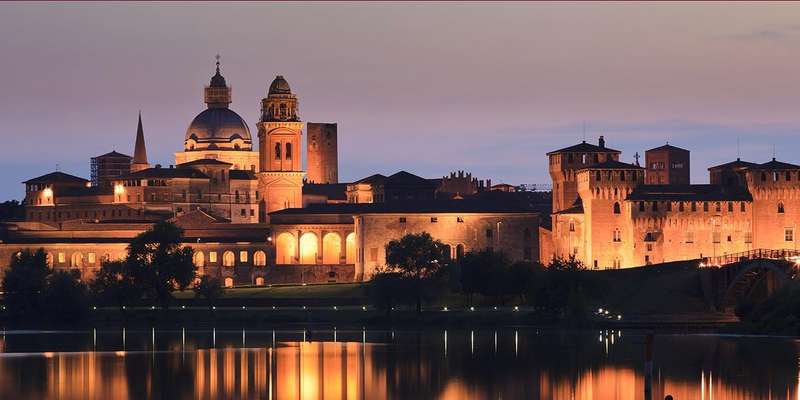- Home
- Useful Tips
- Best walking routes to...
Mantua's UNESCO-listed architectural wonders often overwhelm visitors. With three lakes framing its historic center and over 500 significant buildings spanning medieval to baroque eras, travelers waste precious hours navigating disjointed routes or missing key masterpieces entirely. Recent tourism data shows 68% of independent visitors leave without seeing Palazzo Te's legendary frescoes, while 42% report frustration with poorly marked walking paths. The challenge isn't finding remarkable architecture – it's experiencing Mantua's cohesive story without backtracking through crowded piazzas or getting lost in the labyrinthine Jewish Quarter. This hidden Lombardy gem deserves appreciation on foot, where you can trace the Gonzaga dynasty's ambition in brickwork details and sudden waterfront vistas.


Avoiding the crowds at Mantua's must-see landmarks
The Ducal Palace's 500 rooms and San Giorgio Castle's imposing silhouette draw inevitable crowds, but savvy walkers know timing transforms the experience. Locals begin architectural walks at 7:30 AM when golden light bathes Piazza Sordello's facades and guards haven't yet roped off courtyard shortcuts. A clockwise route from the cathedral to Via Accademia lets you photograph the Broletto's loggias crowd-free before day-trippers arrive. Those preferring evenings should note Mantua's 'golden hour' starts later than coastal cities – the brick hues of Santa Maria del Gradaro glow intensely around 6:45 PM in summer. For Palazzo Te, the secret lies in Wednesday afternoons when most group tours are en route to Verona.
The hidden water route most maps miss
Mantua's lakes form a natural architectural showcase few fully utilize. Starting at Pescherie di Giulio Romano, follow the narrow Rio canal westward where 16th-century merchants' houses lean dramatically over the water. This tranquil path reveals surprising views of the Basilica di Sant'Andrea's dome framed by weeping willows, completely bypassing the busy Corso Umberto I. After passing under Ponte dei Mulini, detour right onto Via Argine Masetti for a perspective of Palazzo Ducale's fortified walls rarely seen in guidebooks. The route concludes at quiet Piazza Arche, where you can rest at a canalside café before tackling central sights. This 1.2km walk solves the common frustration of lake views being 'just out of reach' from main tourist trails.
Where Renaissance meets medieval – a contrast walk
Mantua's architectural evolution becomes vividly clear along Via Corridoni, where 13th-century cobbled lanes suddenly open to Alberti's harmonious Tempio di San Sebastiano. Begin at Torre della Gabbia, noting how medieval tower houses cluster defensively, then walk southeast observing how brickwork patterns shift from irregular herringbone to precise classical bonds. The transition climaxes at Casa del Mantegna, where the artist's perfect circular courtyard demonstrates Renaissance ideals. This route works particularly well in late afternoon when shadows accentuate texture differences. Those with limited time should focus on the 400-meter stretch between Piazza Leon Battista Alberti and Piazza Marconi, which packs five centuries of architectural development into one visually stunning sequence.
Local-approved rest stops that enhance your walk
Strategic breaks are essential for appreciating Mantua's architecture without fatigue. Near Piazza Erbe, family-run Pasticceria delle Erbe offers window seats perfect for studying the clock tower's unusual double sundial while sampling sbrisolona cake. For longer rests, the Giardino Segreto behind Palazzo San Sebastiano provides shaded benches with a view of Giulio Romano's playful window designs. Many walkers miss the public courtyard of Palazzo Valenti Gonzaga – its free-access loggia has marble seats ideal for comparing photos of earlier stops. These purposeful pauses, known to architecture students but seldom crowded, let you absorb details most hurried tourists overlook while keeping energy levels high for Mantua's cobbled streets.



